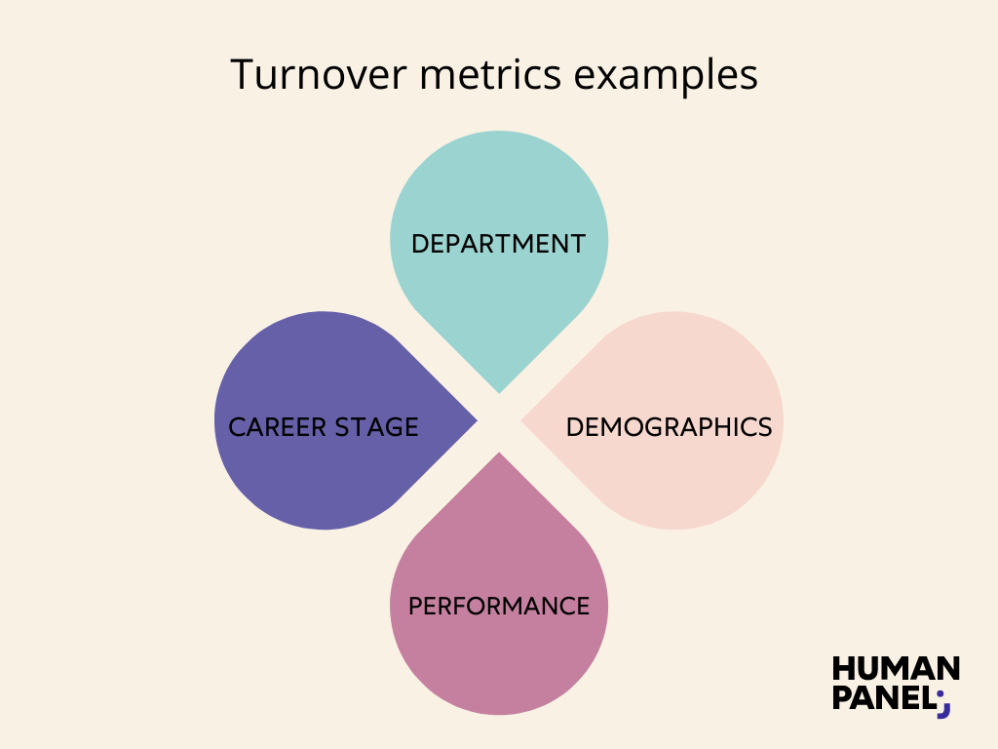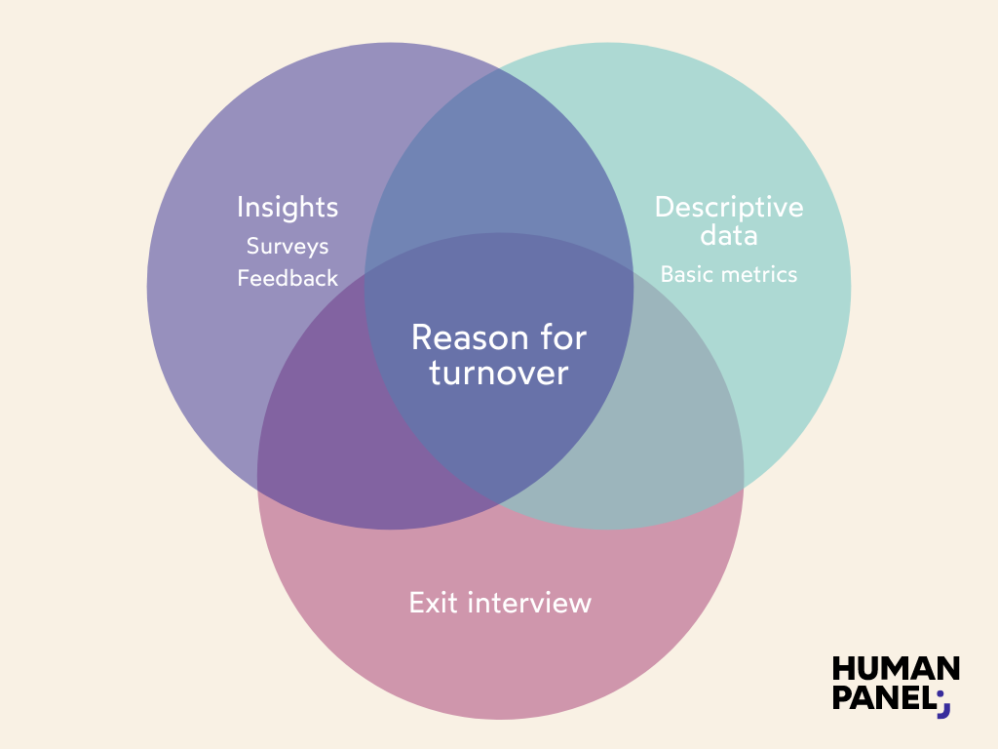3 layers of data you need to know the real reason for your people’s turnover

Investigating the reasons for turnover in your organization can feel like real detective work. But with the right tactics, it can help you understand what you can do to prevent people from quitting and improve employee retention.
To uncover the true motives behind employee turnover, you’ll need to act like a detective – collect evidence and ask the right people the right questions. But there’s good news: you already have a powerful tool at your fingertips. The data.
There are three layers you should sift through to get a complete understanding of why people leave. Let’s look at them one by one.
The first layer: description
The primary layer can be called reporting or descriptive. It is the best-known kind of data analysis, which collects raw metrics and creates an understandable synthesis. It can tell you how many people are leaving, at what stage of the career they are, and what their background is. At this stage, people analytics shows the turnover rates and breaks it down by department, career stage, or demographics.
This hard data is undoubtedly useful, but focusing only on descriptive analysis is very reactive. That’s why you should add another layer, which is insight gathering.

The second layer: insights
Many companies collect insights through 360-degree surveys, where a specific employee gets feedback from different sources: colleagues, customers, and managers.
However, such an approach can be misleading, as it is usually a company-wide event that takes place once or twice a year. It means that the results are never fully objective. Some people use the opportunity to give unpleasant feedback, defend their own mistakes, or vent emotions.
If you want to know how employees feel about the organization, you should ask them specific questions in their natural work groups – within their projects or teams. It can give you granular feedback, which is more rooted in the team or project lifecycle.
Such a mindset can also help you define the reasons for turnover better. It’s because you can see how a particular project, task, or manager influenced the people who decided to leave. Keep in mind that even though the project was successful, the employees may have suffered and no longer want to stay with the company.

The third layer: exit interviews
The third layer – the most revealing in terms of turnover – is the exit interview. It could be the most valuable feedback you’ll ever get. Yet most leaders don’t structure their interviews and instead try to confirm some of their hypotheses.
While it’s true that sometimes people try to get even or poison the well. At the same time, what you’ll hear is usually very sincere.
What can help you is to standardize exit interviews as much as possible. Ask the person leaving about their motives. What led them to a decision? How did they come to the inevitable conclusion? If you’re smart about it, you can delve into the topic. The key is to ask a person about their leadership, their duties, and their daily routine.
Conclusion
With all three layers of data – the descriptive layer, the survey insights, and the human factor – you can distil the real reason for your employee turnover. Collecting data can maximize your chance to see details in the pattern and discover leaks. If you want to include other metrics, we can create a bespoke solution for you at Human Panel. Sign up for our free demo by filling the form below and prevent your people from leaving.




